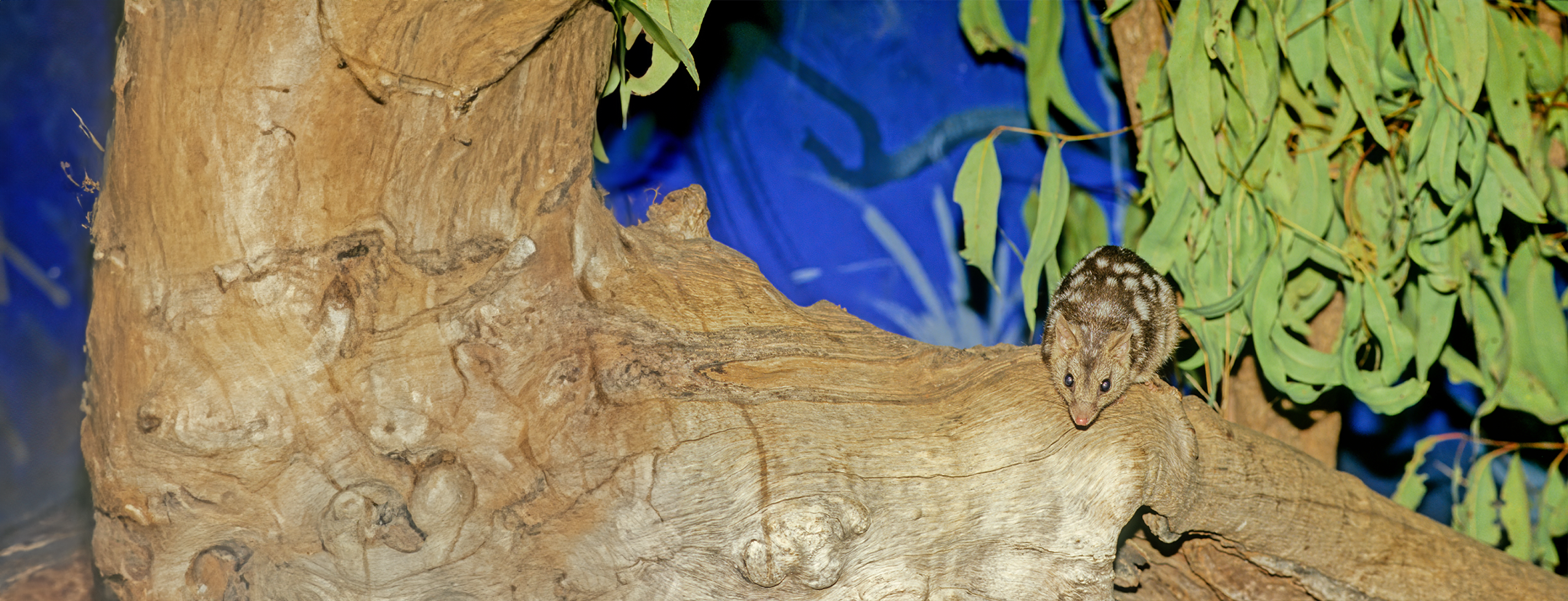
Engineering Cane Toad Resistance in Northern Quolls
Project Details:
The northern quoll (Dasyurus hallucatus), a carnivorous marsupial native to Australia, faces a severe threat from the invasive cane toad (Rhinella marina). Since the introduction of the toads in Queensland in the 1930s, the northern quoll population has plummeted by 75% due to the toad’s deadly neurotoxins. As the cane toad continues to spread across Australia, it threatens the complete extinction of the northern quoll and other native carnivore species.
In Partnership With
University of Melbourne is ranked among the best universities in the world, delivering education and research that is global in reach, ambition and impact. The University’s purpose is to benefit society through the transformative impact of education and research. Nearly 10,000 academic and professional staff support a vibrant community of more than 52,000 students, including more than 20,000 international students from 150 countries. The University is embedded within world-class research and innovation precincts and engages with its communities and partners to address major social, economic, medical and environmental challenges.
The Colossal Foundation, in collaboration with the University of Melbourne, is spearheading a revolutionary initiative to engineer resistance to cane toad toxin in northern quolls. Utilizing gene-editing tools, the team successfully engineered toxin resistance in cells of a closely related species, the dunnart, using genetic features found in natural predators of toads.

Professor Andrew Pask, Head of the Thylacine Integrated Genomic Restoration Research (TIGRR) Lab, School of BioSciences, Faculty of Science, University of Melbourne and Colossal Scientific Advisor shown working with a fat-tailed dunnart.
 One of the greatest threats that Australia’s wildlife faces is invasive species. Toxic prey, such as cane toads, have had devastating impacts on northern quolls, freshwater crocodiles, goannas, snakes, and many other native species. This advance, by Frankenberg and colleagues, is a crucial step towards a future that might give native wildlife a potential leg up over toads, and maybe even turn them from a deadly last meal to an abundant food supply.
One of the greatest threats that Australia’s wildlife faces is invasive species. Toxic prey, such as cane toads, have had devastating impacts on northern quolls, freshwater crocodiles, goannas, snakes, and many other native species. This advance, by Frankenberg and colleagues, is a crucial step towards a future that might give native wildlife a potential leg up over toads, and maybe even turn them from a deadly last meal to an abundant food supply. 
Next, we will work on deriving induced pluripotent stem cells (iPSCs) from northern quolls, which can then be CRISPR-edited to introduce toxin resistance genes. Offspring from these edited quolls will inherit this resistance, allowing for the eventual release of toxin-resistant populations into the wild.
THE SCIENCE BEHIND THE EFFORT

Genetic Sequencing:
Sequencing the genome of the northern quoll and cane toad resistant-species is needed to identify target genes for conferring resistance to the toad’s deadly toxin.

Induced Pluripotent Stem Cells (iPSCs):
The project involves deriving iPSCs from northern quoll fibroblasts and editing them to introduce toxin resistance. These iPSCs can then be used to produce genetically resistant offspring, ensuring the long-term survival of the species.

Gene-Editing Technologies:
Utilizing CRISPR and other advanced gene-editing tools, the project introduces specific genetic modifications to confer toxin resistance in northern quolls. These techniques have been validated in closely related marsupial species.

